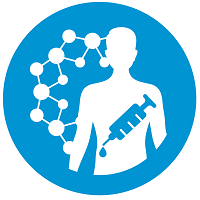Preclinical, Clinical, and Translational Sciences
Rapid Fires: Novel In Silico and In Vitro Approaches in Drug Development 1
Enhancing Biorelevance: Unveiling Enzymatic Impact on Simulated GI Dissolution
Monday, November 10, 2025
3:30 PM - 3:45 PM CT
Location: 225 AB

Catarina I.D Chendo, MS (she/her/hers)
Analytical Scientist
Hovione
Lisbon, Lisboa, Portugal
Rapid Fire Speaker(s)
This presentation highlights the development of an improved simulated gastro-intestinal (GI) dissolution method that integrates enzymatic digestion and food effect. Comparative studies demonstrate that conventional enzyme-free protocols may misestimate drug release, particularly for protein-based formulations (e.g. ASD carriers, active biologics). By capturing macromolecular cleavage by enzymes and food effect, this method improves the predictive accuracy of in vitro assessments, strengthening in vitro–in vivo correlations (IVIVC). This strategy reflects the 2024 FDA updates to Product Specific Guidance (PSG) that introduces the use of in vitro bioequivalence, aiming to streamline approval processes through enhanced in vitro assessments.
Case studies demonstrated substantial impacts on dissolution profiles, with either complete enzymatic degradation or enhanced dissolution of formulated products. Results emphasize the method’s relevance for supporting more robust physiologically based pharmacokinetic modeling. This approach offers an expedite, science-driven solution for optimizing drug development strategies, especially for challenging protein-containing therapeutics.
Case studies demonstrated substantial impacts on dissolution profiles, with either complete enzymatic degradation or enhanced dissolution of formulated products. Results emphasize the method’s relevance for supporting more robust physiologically based pharmacokinetic modeling. This approach offers an expedite, science-driven solution for optimizing drug development strategies, especially for challenging protein-containing therapeutics.
Learning Objectives:
- • Understand enhanced translational in vitro tools for performance forecasting
- • Evaluate the impact of enzymatic digestion and food effects on drug release
- • Apply improved methods to strengthen IVIVC and formulation design


